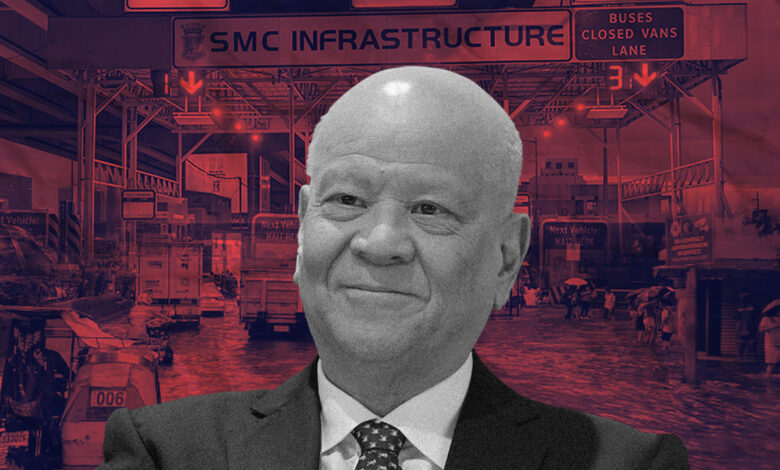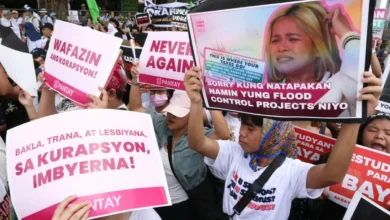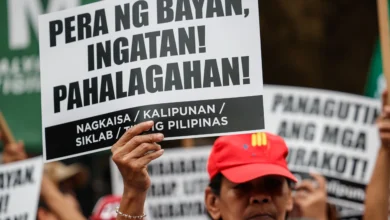
Ramon Ang’s promises: Too good to be true?
True solutions demand rigorous, inclusive planning that centers both nature and people.
When Ramon Ang of San Miguel Corporation (SMC) recently pledged to solve the Philippines’ perennial flooding woes “at no cost” to government coffers, the announcement was greeted with a mix of cautious optimism and deep skepticism.
After all, a billionaire tycoon offering a fix-all solution free of charge sounds more like a PR stunt than a serious infrastructure strategy. Let’s unpack why.
SMC infra remains unproven
Public trust in Ang’s promises is understandably low. The roads and expressways under San Miguel’s care tell a story of neglect and half-measures. Drivers endure potholes and uneven surfaces on stretches supposedly managed by one of the country’s biggest conglomerates. The Skyway, touted as a flagship project, has seen frequent closures and maintenance issues that inconvenience commuters daily, despite maintaining high costs to users. Such recurring problems starkly clash with the image of “world-class” design and execution Ang touts.
SMC’s infrastructure projects arguably prioritize profit over public safety and convenience. Toll fees have been a point of public ire, rising steadily despite the deteriorating conditions of some roads. Not to mention the longstanding conflict between the insufferability of faulty RFIDs, impatient drivers and motorists, and the company’s doubtful willingness for solutions. This pattern raises questions about the company’s commitment to long-term maintenance and genuine public service, suggesting a business model focused on maximizing revenue rather than sustainable infrastructure development.
The country’s flooding crisis is even more complex. Certainly not one that a single company can fix, no matter how deep its pockets. What SMC needs is proof in the pudding. Bulacan, for one, which is among the worst flood-prone provinces, now hosts the controversial airport project under SMC’s watch. Locals have raised alarm bells about the project’s impact on flooding patterns. Before Ramon Ang embarks on new ventures, he must first demonstrate concrete results in Bulacan: that the project improves, not exacerbates, flooding. Otherwise, these grand promises remain hollow.
READ: Where did the billions in flood control projects go?
A problem that runs deep
Flooding in the Philippines is a tangled knot of natural and human factors. Ang has pointed to informal settlements and improper waste disposal along rivers like Tullahan as part of the problem, and he’s right. Trash-blocked waterways and unregulated, makeshift structures choke drainage systems, worsening floods. But these are symptoms of deeper governance failures: inadequate waste management, lack of affordable housing, and the state’s inability to provide equitable urban planning. These are issues that would be well beyond Ang’s remit in his imagined flood control initiative. Not to mention, it’s a status quo that has long benefited both government and corporate elite (which SMC belongs to).
Projects like SMC’s proposed PAREX (Pasig River Expressway)—long reviled as an ecological threat and eyesore—ironically also embody the failure to address flooding sustainably. The prospect of resurrecting such designs poses a threat not only to the environment but also to the safety of millions in a megacity already pushed beyond its limits. True solutions demand rigorous, inclusive planning that centers both nature and people. Has SMC done anything to prove this is their forte?
No small task, no free lunch
Flood control is not simply a technical problem to be “solved” by a private firm’s grand vision. It is a natural, global threat to human life and property that requires collective accountability among corporations, the government, and the public alike. Ang’s promises may sound impressive on paper, but without transparent data, genuine community engagement, and systemic reform, they risk becoming yet another chapter in the Philippines’ long saga of infrastructure blunders.
Let’s be clear: building lasting solutions requires more than goodwill or grand promises. Ramon Ang, like any business leader, operates within a system where investments seek returns—whether financial, political, or reputational. Filipinos understand this well. They know that truly meaningful change doesn’t come without costs, commitments, and accountability. Simply throwing money at a problem isn’t a solution in itself. There is no such thing as a free lunch, especially when it comes to complex public challenges like flooding.
Ultimately, the Filipino people deserve infrastructure that is safe, sustainable, and accountable, not grandstanding gestures or private PR campaigns. The work ahead demands humility, expertise, and genuine partnership across society.
Ramon Ang’s flashy promises may capture headlines, but it will be the collective vigilance of citizens and the integrity of government institutions that will ultimately determine whether the floodwaters truly recede.




